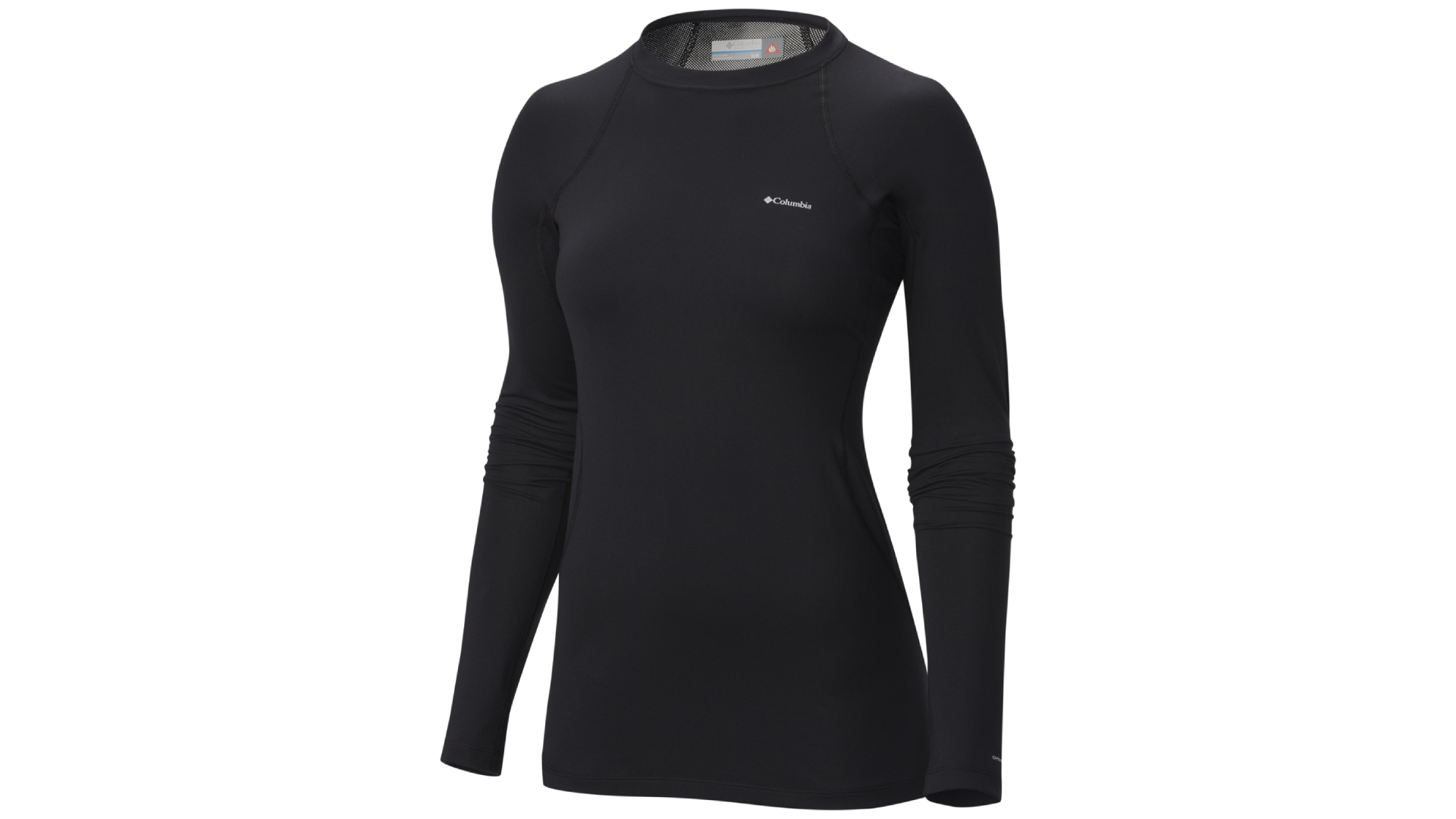Advnture Verdict
An advanced piece of trail tech hiding beneath an ostensibly simple bit of underwear, the Columbia Omni-Heat 3D Knit Crew II base layer shirt is an excellent performer in really cold conditions.
Pros
- +
Uses superior tech to keep you toasty
- +
Smart thumb loops
- +
Four-way stretch material for active use
- +
Maintains thermal properties when wet
Cons
- -
Too warm for some conditions
- -
No zip to dump warm air if you overheat
- -
All synthetic materials
You can trust Advnture
First impressions
At first glance, the Columbia Omni-Heat 3D Knit Crew II might appear pretty pedestrian – just a standard base layer, with no obvious bells and whistles – but if you turn this top inside out, suddenly everything changes. The inner looks almost metallic, and resembles something you might see worn on the bridge of the Starship Enterprise.
- Explore all the best base layers in our buying guide
- Think more substantial mid layers with the best down jackets and puffers
- When it comes to keeping warm and dry, why is layering important?
As with everything they make these days, Columbia have employed their trademark Omni-Heat technology in this base layer, in a bid to keep the wearer warmer than any other brand. The Omni-Heat concept involves the use of loads of soft fibre pods, which create a little gap between the garment being worn, and your skin – your bodyheat then warms the air trapped inside this space and the silver lining of the top reflects this heated air back at you. Genius. In addition, because there’s a space between your body and the base layer, less moisture builds up, and the poly fabric of the top wicks sweat away too.
• RRP: $85 (US) / £70 (UK)
• Gender availability: Male / Female
• Materials: Polyester (85%) and Elastane (15%)
• Weight (Male large): 232g / 8.2oz
• Sizes: XS–XXL
• Colors: Men: Black / Bright indigo; Women: Black / Shark
• Compatibility: Skiing, snow-boarding, alpine adventures and cold-weather hiking, biking and trail running
In the field
So, the Omni-Heat tech all sounds very impressive, but it does actually work? In short, yes. In fact, it works so well that sometimes you can feel far too hot in this top – especially if you’re engaged in a high-energy activity such as hill walking or trail running. We found that shedding an outer layer generally sorted the problem out, but it’s worth bearing this in mind, and reserving this top for runs, rides and climbs in the coldest months.
That said, if you’re heading somewhere seriously cold – like a mountain top or a ski resort – this is a great option. It’s made from material with four-way stretch, so it allows plenty of movement, has non-annoying flat seams, and has been treated with an antimicrobial substance to prevent bacteria and BO building up, no matter how sweaty you get.
Other features include integrated inner-sleeve thumb loops (as opposed to thumb holes, which would let cold air in) to stop your arm getting exposed when you don another layer, and a long torso, to prevent the top riding up and revealing your back or stomach to the elements – seemingly small touches that actually massively improve the performance of the top.
All the latest inspiration, tips and guides to help you plan your next Advnture!

Author of Caving, Canyoning, Coasteering…, a recently released book about all kinds of outdoor adventures around Britain, Pat has spent 20 years pursuing stories involving boots, bikes, boats, beers and bruises. En route he’s canoed Canada’s Yukon River, climbed Mont Blanc and Kilimanjaro, skied and mountain biked through the Norwegian Alps, run an ultra across the roof of Mauritius, and set short-lived records for trail-running Australia’s highest peaks and New Zealand’s Great Walks. He’s authored walking guides to Devon and Dorset, and once wrote a whole book about Toilets for Lonely Planet. Follow Pat’s escapades on Strava here and Instagram here.

